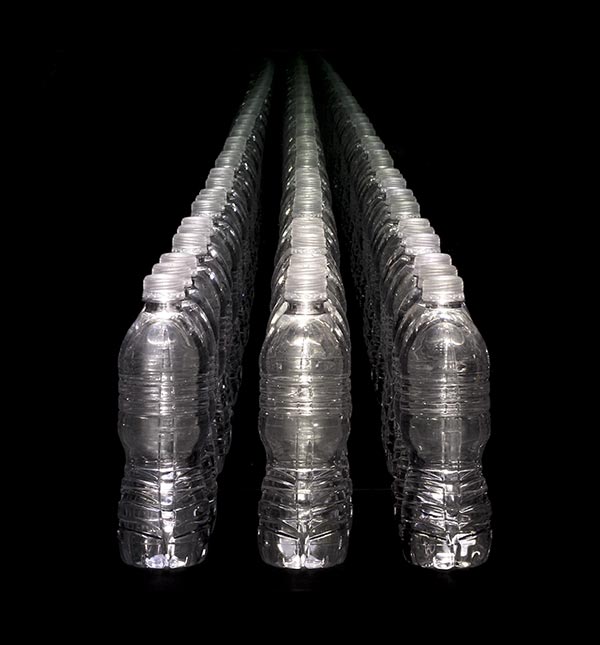
Kolker views art as an experiment which he creates and curates at the moment of its production. Both the artist and his audience become the measuring instruments, which unlike the digital video recorder or camera, are sensitive to the prejudices of our prior experiences by analogy and comparison in addition to a bias posture called parallax. We perceive concepts and objects differently depending on our positions in space and time. As an example, Kolker uses the digital dots per inch (dpi) concept of resolution as the experimental parallax of the view from up-close and from afar. A photograph of a cumulus cloud taken by the artist at 35,000 feet is painted in a style called fracolor in which elemental pigment and optical colors are mixed only with black and/or white to form tints and shades. The painting is modular, of sixteen 24 x 24 inch canvases, in which a grid of 1089 (33 x 33) squares are painted a selected tint or shade. The completed panel is screen printed with white pigment ink circumscribing the panel in to 1089 dots. The resultant painting of sixteen panels measures 96 x 96 inches and has a resolution of merely 1.88 dpi up-close. When viewed from afar at twenty feet the resolution increases by the square of the distance to 752 dpi; at thirty feet to 1692 dpi; at forty feet to 3008 dpi. What appears abstract up-close is highly defined from afar.
However, it is more than the view of the cloud about which the artist expects (as in anticipated outcome of his experiment) his audience to perceive. Hopefully the audience will revisit the Greek playwright of 2500 years ago and discover that Aristophanes’ Cloud-Maidens is a chorus line of scantily clad young women in poufs and tutus of gossamer fabric and feathers resembling a cloud while chanting an aspirational song much like “every cloud has a silver lining.” Happy clouds are the product of a comedy, especially amongst the Greek culture of that time, which was devoted to reason and logic. Socrates at his school, “The Thinkery,” promoted sophistry, that artful persuasion of spin-doctors of higher education, whereby one can be led to be convinced of ethically, factually or scientifically wrong things. Perfect for the Athenian aristocrat who makes application for his playboy son’s matriculation at the Thinkery; perfect for the son to learn the artful persuasion of the sophists, beyond reason and logic but about feelings, used to assuage and conceal his corrupt life; perfect for Kolker’s concept of the analogue, wherein we find reason through analogy rather than logic.
Cumulonimbus, 2009 is a 96 x 96 inch sixteen panel painting (silkscreened in white) of a fracolor transformed image of the smoke and dust cloud hovering over the fallen World Trade Center. Cumulonimbus bleu, 2009 is a painting of the identical image but silkscreened blue. The two paintings hang side by side for the audience, as the measuring instrument, to discover the bias and parallax effects of a view up-close and from afar (the digital concept). By analogy (or by the analogue) does knowing that the artist used a tragic image, color the audience’s feelings? Or is it the dark blue silkscreen color itself that enhances the cloud’s transformation into an epic tragedy?
Paul Kolker: Aristophanes and the Clouds…Go Digital! — Opening May 7, 2009.
